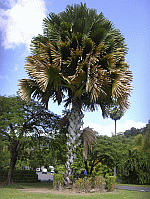
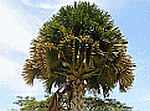
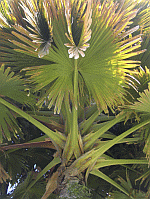
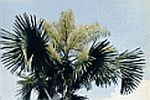
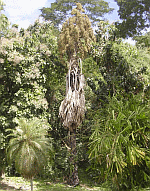
|
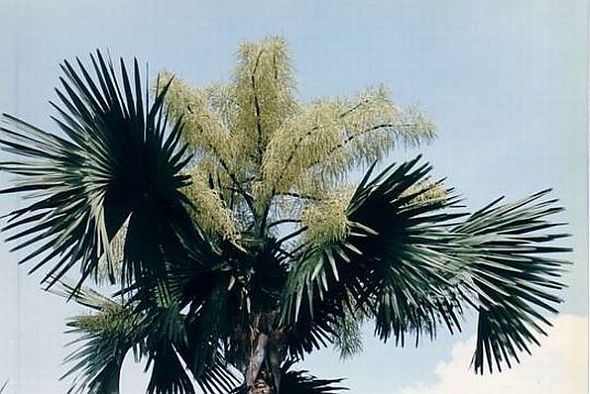
Hosta
Plant Family: Member of the Arecaceae or Palm family, which includes the Royal (Rostonea oleraceae), Coconut (Cocos nucifera), Date (Phoenix dactylifera), and Oil (Elaeis guineensis) Palms, and two rainforest palms indigenous to Dominica, the Palmiste (Euterpe dominicana) and the Yanga (Geonoma dominicana).
Description: One of the most dramatic plants in nature; a huge, imposing tree, more so when mature and flowering; has one of the largest inflorescences of any flowering plant in the world; grows to a height of up to 25 m (80 ft), with a straight cylindrical trunk, 1-1.3 m (3-4 ft) in diam, ringed with prominent leaf scars, surmounted by a crown of immense, fan-like leaves; a single leaf-blade at full size being as much as 5 m (16 ft) in diam, with a stout petiole 5 m long and the margin with short dark teeth; at 20-40 yrs, and reportedly up to 80 yrs, it produces an enormous, creamy-white inflorescence, 4-6 m (14-20 ft) high and nearly as broad, which first appears as an erect pole issuing from the center of the crown; produces millions of very small flowers, each about size of a finger nail; this is followed about 8 months later by the large, hard, marble-like fruit, and about 12 months later by the death of the palm; the leaves become gradually smaller as the palm approaches the flowering stage, withering and falling back along the stem and finally dropping off, leaving only the towering stem and fruiting panicle at the top.
Natural Habitat: Tropics and sub-tropics, with low to moderate rainfall; known only in cultivation, unknown in the wild.
Origin and Distribution: Native of Sri Lanka and Malabar, India, and found in many areas of the tropics and semi-tropics today; examples are found in State Grounds, Roseau, and at Vieille Case in the North of the island.
Uses: Primarily ornamental today; edible starch produced from stem; large fan-shaped leaves used for fans, umbrellas and thatching; formally used for olas (books), in which young leaves were bleached, written on, and bound in volumes.
Indigenous Legends: The great Indian epic, Ramayana, was said to have been written on these olas. The tree is often referred to as the Century Palm, a metaphorical allusion to a presumed 100-year life span.
References:
Alan Eyre. The Botanic Gardens of Jamaica. Andre Deutsch, London 1966
Hosta Ornamental Trees, (hosta.20fr.com), Malaysia 2004
H.F. Macmillan. Tropical Planting and Gardening, Macmillan, London 1956
Tropical Research & Education Center, (plantapalm.com), Florida 2004.
|



